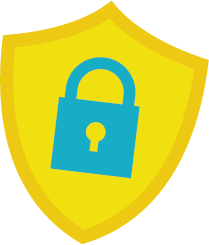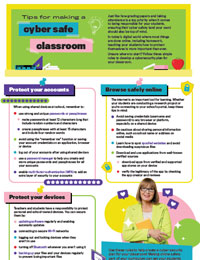
Just like how grading papers and taking attendance is a top priority when it comes to being responsible for your students, ensuring their cyber safety (and your own) should also be top of mind.
In today’s digital world where most things are done online, including homework, teaching your students how to protect themselves is more important than ever.
Unsure where to start? Follow these simple rules to develop a cybersecurity plan for your classroom.
Protect your accounts
When using shared devices at school, remember to:
- use strong and unique passwords or passphrases
- make passwords at least 12 characters long that include random numbers and characters
- create passphrases with at least 15 characters and include four random words
- avoid using the “remember me” function or saving your account credentials on an application, browser or device
- log out of your accounts after using shared devices
- use a password manager to help you create and store unique passwords and passphrases for all your accounts
- enable multi-factor authentication (MFA) to add an extra layer of security to your accounts
Protect your devices
Teachers and students have a responsibility to protect personal and school-owned devices. You can secure them by:
- updating software regularly and enabling automatic updates
- connecting to secure Wi-Fi networks
- logging out and locking devices when they aren’t in use
- turning off Bluetooth whenever you aren’t using it
- backing up your files and your devices regularly to prevent losing important files
- Following the cyber security rules your school or school board have put in place
Browse safely online
The internet is an important tool for learning. Whether your students are conducting a research project or you’re connecting to your school’s portal, keep these tips in mind:
- avoid saving credentials (username and password) to any browser or platform, especially on a shared device
- be cautious about sharing personal information online, such as school name or address on social media
- learn how to spot spoofed websites and avoid downloading suspicious files
- download and use applications from well-known verified sources
- download apps from verified and supported app stores on your device
- verify the legitimacy of the app by checking the app creator and reviews
Use these rules to help create a cyber security plan for your classroom! Making online safety part of your curriculum can set your students up for success as they continue to learn and become more active online.


